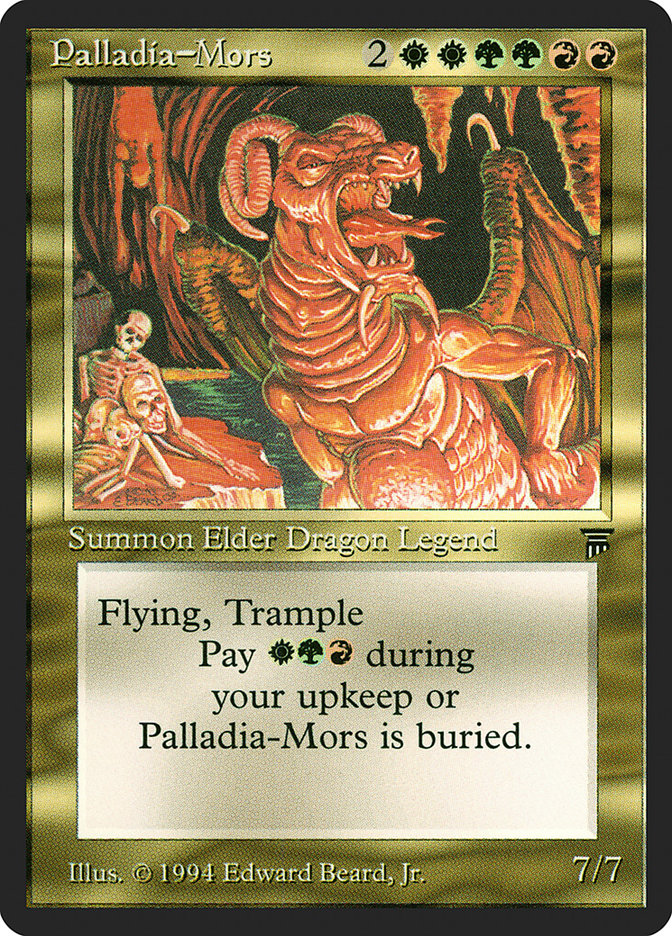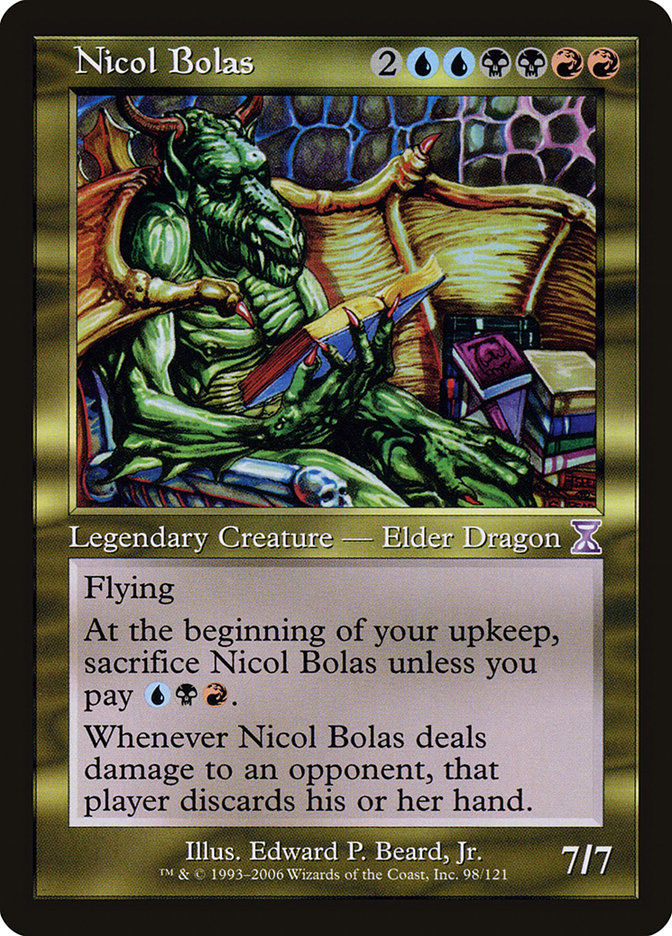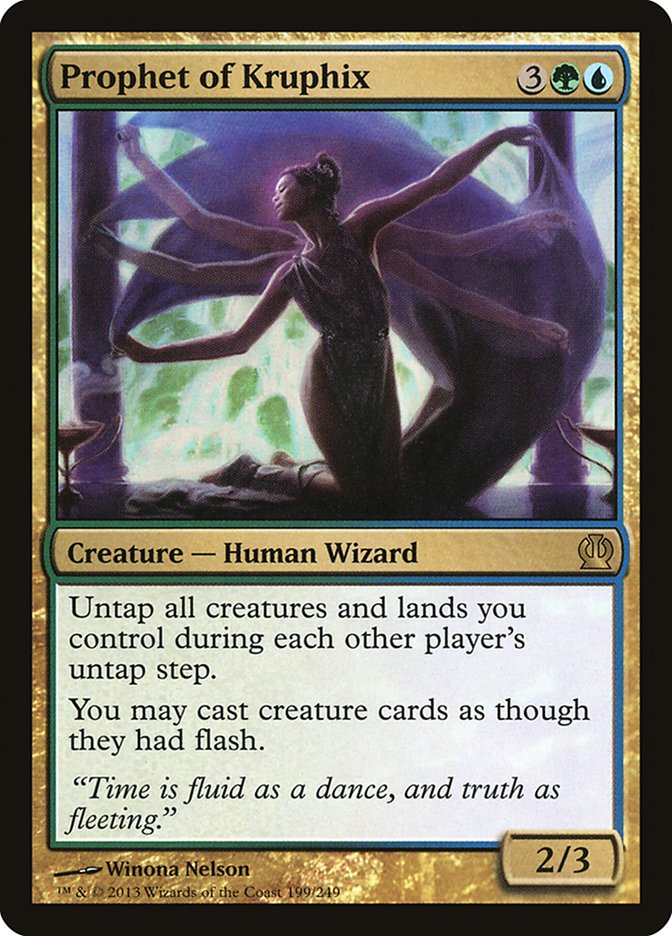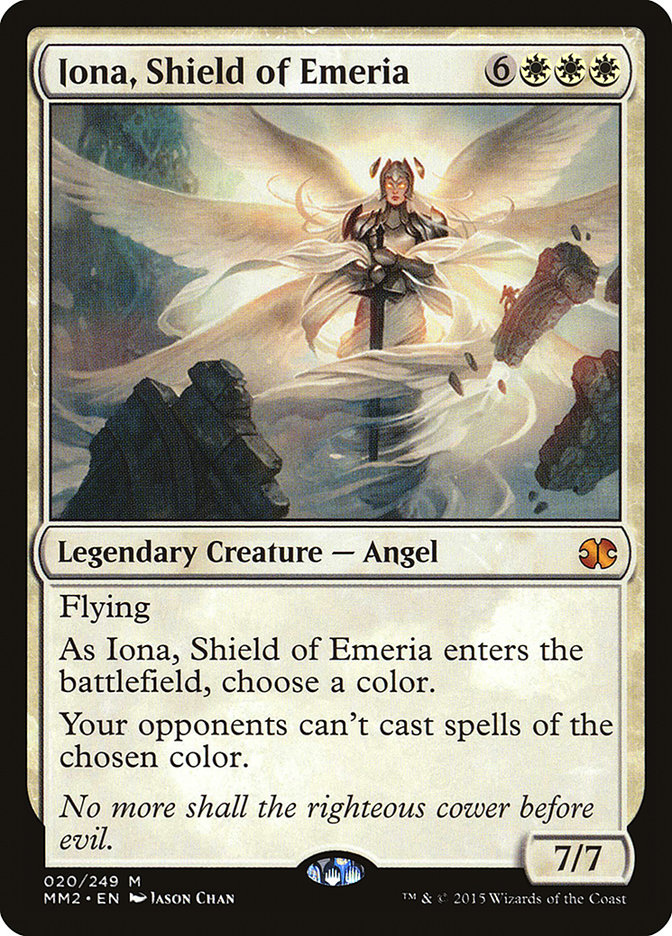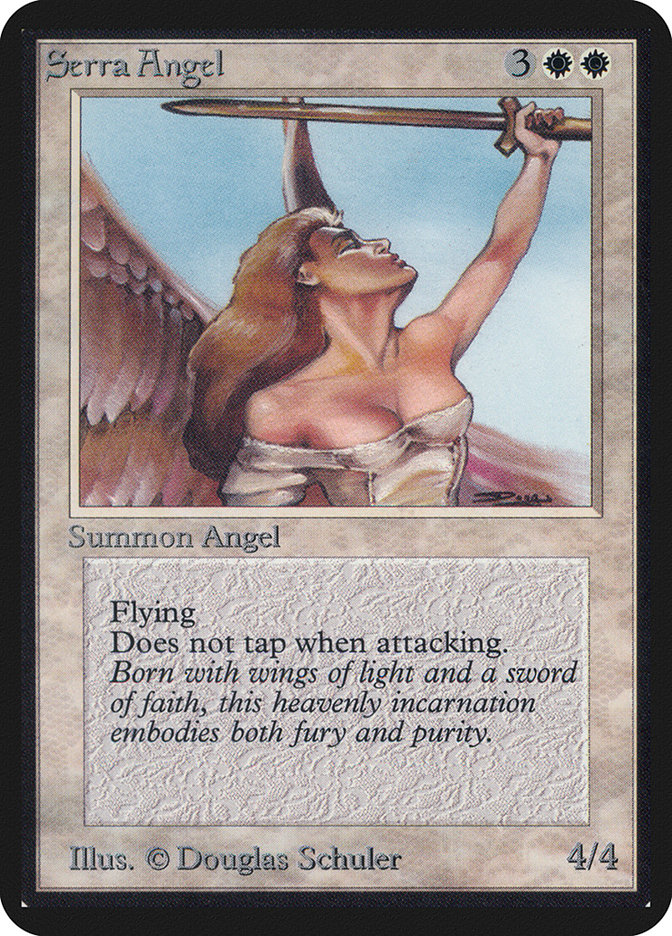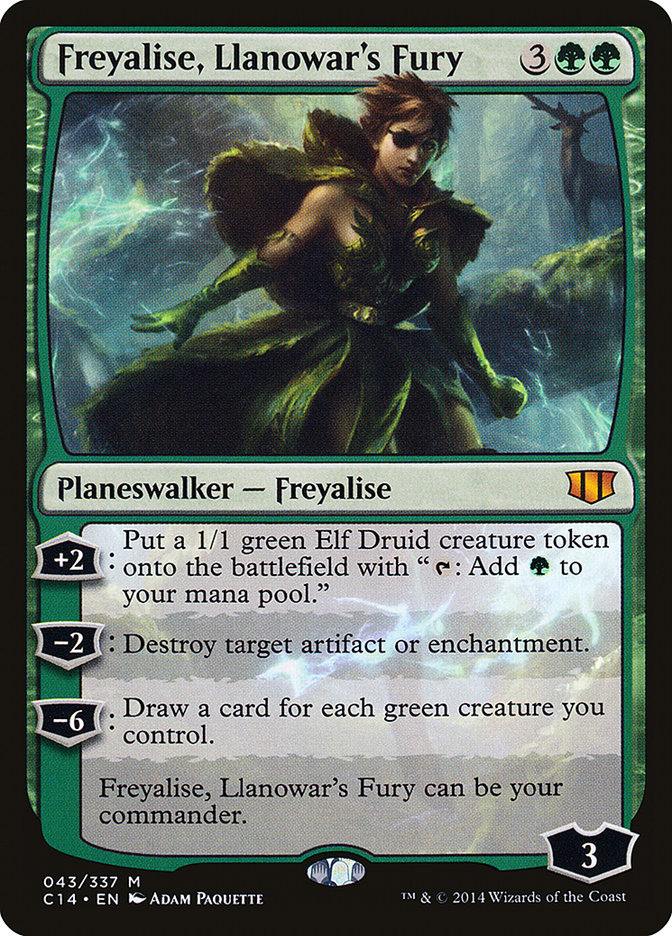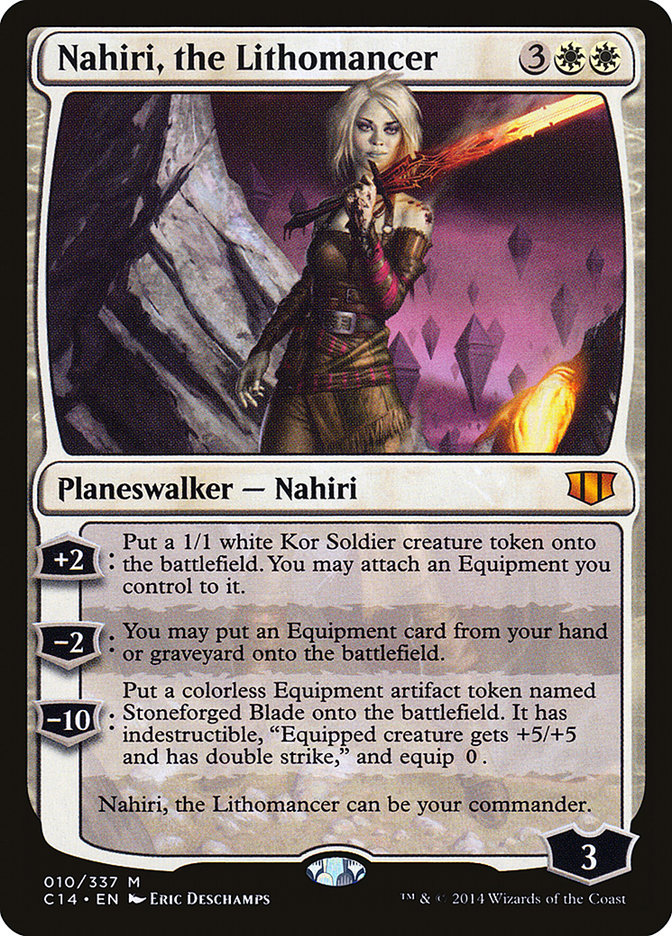As 2017 dawns and we move into the second decade of the format’s official life, I’d like to look at the state of Commander: where we’ve been, where we are, and where we’re going. It’s an exciting time to be a Magic player, especially in an Eternal format. With twenty-plus years of cards under our belt and professional designers and developers continually pushing the envelope of thought-provoking and adrenaline-pumping cards, deck builders and players have a broad swath of avenues to explore when putting together projects for the 100-card format. We’re happy that the format’s players both have those choices and are willing to explore them. It’s part of what keeps the format alive.
Where We’ve Been
Commander is certainly the Little Format That Could. It’d be disingenuous to suggest that we started out with a fully-developed, coherent vision for what we wanted, but when I formed the Rules Committee in 2006 along with Gavin Duggan and Duncan McGregor, we had an inkling of the direction we wanted to go. We knew is that it to be different, not more of the same. There were already plenty of great competitive formats, so I driving desire to find a spot for the more casual player, one who was okay with games ending up as giant durdle-fests. From the get-go I hoped for the beer and pretzels version of Magic, and I’m pretty sure that’s what we got.
In the format’s earliest days, we struck the right chord, being considered the “dollar rare format.” Early on, we bounced around a bit, trying to accommodate all the various mindsets, but quickly saw that was a path to chaos. We even added a pretty serious competitive player, former Level 5 Judge Kevin Desprez, to the Rules Committee for his particular insights (plus the fact that he’s smarter about Magic than just about everybody).
We simply eventually realized that there’s no way to make the format all things to all players. Eventually, we began focusing on the core audience—the folks who, like us, were looking for something different out of their Magic experience. I’ll admit that in the middle years I often took a stance against competitive players which was counterproductive, a stance which I’ve re-evaluated and corrected. While I still maintain that highly competitive play is toxic to the Commander vision (while recognizing that it’s exceptionally healthy for others), there is no need to vilify competitive players.
As far as this format goes, we simply have different goals. Those players are not wrong for wanting what they want out of it, but that’s simply not the direction we chose to take it. We know that the format gets used in ways we didn’t intend, and that’s okay. Tournaments aren’t going to factor into our decision-making process, but we can still wish the people who run them the best of luck in their endeavors.
Relatively early on, we also understood that an excessively large banned list would be fatal. We took the lesson of Five-Color (or Chromatic, as I think it was also called) to heart. While it took us some time to zero in on exactly how to articulate what we wanted, we knew from the start what we didn’t want for the banned list. Something too large and too unwieldy would be difficult to both maintain and to properly message.
We also early on developed the somewhat conservative approach to the banned list that we’ve maintained into the present day. There must be significantly compelling reasons to put a card onto or take one off the list. We’d rather wait to make sure it’s the right move instead of reacting too quickly. One of the reasons this makes sense is that the stakes aren’t particularly high—for example, there’s not a season’s worth of Pro Tour Qualifiers on the line for a specific card or combo to terrorize. This is, of course, also why we don’t issue emergency bans. Sure, we knew with 99% certainty that Griselbrand was going to get the axe, but six weeks (or however long it was) of letting him loose to see what would happen wasn’t going to irrevocably damage anything.
While this may lead to criticism for not acting soon enough on a particular card, we’re willing to accept that criticism. We’d rather have that than acting too quickly and having to reverse the action (or living with something awkward), which becomes a messaging nightmare. Messaging is also why we haven’t done test bans or unbans format-wide. It’s another thing we quickly realized would cause a great deal of confusion (“Wait, is the test period for Protean Hulk still in effect or not?”), and we’d rather be clear, since not everyone pays attention to the news for Commander every day.
Where We Are
The format is in a healthy place at the moment and has been for a while now. There are cards which annoy some folks (and there always will be), but we seem to have reached a time of relative peace. Prophet of Kruphix seemed to be the knee in the curve.
Once that was gone, it feels like there was a slight cooling effect on the other conversations. The biggest monster was no more, and the waters were a bit calmer. There’s no objectively right answer. I’m reasonably confident that the format would be okay with a few more cards on the banned list, but that in and of itself isn’t a reason to ban anything.
We’re aware that there’s no way to please everyone, not even everyone who agrees with the philosophy we’ve developed. We don’t want as a first-order effect to alienate anyone, but it’s going to happen sometimes as collateral damage. As I’ve said many times before, we want the format to be the best that it can be on its own terms. That simply means that it can’t be all things to all people. That we want to do things a particular way isn’t a commentary of any kind on other ways of doing things; it’s just the path which we’ve chosen.
Part of where we are is making sure that we’re in touch with the cards and issues which the fans of the format are talking about. To this end, there are certainly cards—and conversations about those cards—which we have our eyes on. Some folks think this means that there’s a formal but internal Watch List, which isn’t the case (although there once was). We’re simply aware of the cards like Iona, Shield of Emeria, or Sol Ring, which are constantly up for discussion on the various message boards. Having a formalized Watch List is an unnecessary step.
It’s problematic because it becomes a de facto springboard to banning—if it’s on the list one quarter, it’ll be banned the next. Or, worse, people expect that you won’t ban a card until it serves some Watch List time. Once again, messaging becomes tricky—we would then have to answer not only why a card was banned or unbanned, but why Watch List cards weren’t banned or why they were removed from the Watch List. What was bad enough about them to get Watch-Listed, but not bad enough for banning?
As I mentioned last week, attempting to explain why every card that isn’t banned isn’t banned is a path to madness. Cascading bans (“if this is banned, then you have to ban that”) are also problematic. The default state of a card is unbanned; it’s only argued for if it’s going on (or coming off) the list. A card is argued on its own merits, and not in comparison to any other card (although some comparisons come naturally, as people do with Tooth and Nail and Protean Hulk). If it does the same exact thing, then it obviously gets banned. If in Aether Revolt there is a card called Mophet of Moophix which costs five, untaps all your creatures and lands on each player’s untap step, and lets you cast creatures as though they had flash, rest assured that it will get banned.
Where We’re Going
The greatest challenge to the format will be in keeping it fresh. Fortunately, there’s already a process in place to stave off stasis—bunches of cool new cards get released every year (in fact, we’ll talk about some of those new cards next week in my review of Aether Revolt). Players and brewers alike get new toys with new abilities all the time. New mechanics, new tribes, and new archetypes are part of what keeps Magic fresh—the game wouldn’t have survived this long if we were still playing Brian Weissman’s “The Deck” from 1996.
As an Eternal format, there is even more room to explore in Commander, since you get to combine the new cards with nearly any card ever printed. Even more attractive is the idea that, because there are so many cards, there may be still be combinations or synergies as yet undiscovered.
But that’s not necessarily enough. We on the Rules Committee have to keep an eye on how the format itself is progressing and not simply rely on Magic’s built-in dynamism. Sure, we’ve built something nice here, but the things that are best for a young entity aren’t always the best things for a mature one. We’re not going to just run around and make changes for change’s sake, but we have to be aware that what might have been undesirable in the beginning could be worth considering now. Think about the off-color mana production issue, one which I’ll admit I was at first against. Just being willing to discuss the issue meant that we weren’t stuck in a rut. It’s not better, just different, and now new strategic options are open to players; it wasn’t a big change, but it was one that made enough sense and was consistent with our idea to simplify things as much as is reasonable.
We’re not going to modify the underlying constitution of the format, but in order to move into the future, we have to actively look at occasional course-nudging. To that end, no discussion will be off the table, even if it’s a wild idea that we probably won’t adopt. It’s not likely, for example, that all planeswalkers will be available as commanders, but simply having the discussion (both among ourselves and in the broader community) ensures that we’re always thinking about where we are.
In the worst case, it reinforces that we’re doing the right thing; in the best, we hit upon a compelling new idea. Regular readers will know that at every RC meeting, we argue for bringing a card off the banned list. The thought exercise keeps our minds actively focused on the format’s philosophy (and a brother can always hope for a breakthrough on Recurring Nightmare). There might be some ideas which are too crazy to implement, but no idea is too wild to talk about.
When I think of the long-range vision of the format (that five- or ten-year view), I want it to continue to be what it is—a comfortable old friend that doesn’t need to be anything other than what it is. I don’t care that it’s not the latest eSport or gaming craze. While we no doubt want (and need) new and exciting things in our lives, we also need the traditional and the familiar.
We on the RC are in the unique position of not having to worry about promoting a commercial product, just an idea. The format doesn’t need to compete in any kind of marketplace (although we’re sensitive to the fact that the Magic brand does). Whether a hundred or a hundred thousand people are playing Commander, the vision is the same. Commander has always been a social format, a place in which people can combine their affection for a game with their fondness for each other. We intend for the format to continue to be a meeting ground for folks who like to gather together and have epic experiences. We sincerely hope you come along for the ride.
This Week’s Deck Without Comment is The Threat of Yasova.
Creatures (29)
- 1 Erhnam Djinn
- 1 Solemn Simulacrum
- 1 Kiki-Jiki, Mirror Breaker
- 1 Avalanche Riders
- 1 Wood Elves
- 1 Keiga, the Tide Star
- 1 Memnarch
- 1 Yavimaya Elder
- 1 Nullmage Advocate
- 1 Coiling Oracle
- 1 Sower of Temptation
- 1 Woodfall Primus
- 1 Dominus of Fealty
- 1 Hellkite Charger
- 1 Oracle of Mul Daya
- 1 Roil Elemental
- 1 Conquering Manticore
- 1 Nin, the Pain Artist
- 1 Riku of Two Reflections
- 1 Zealous Conscripts
- 1 Maelstrom Wanderer
- 1 Rubblehulk
- 1 Molten Primordial
- 1 Djinn of Infinite Deceits
- 1 Forgestoker Dragon
- 1 Xenagos, God of Revels
- 1 Jeering Instigator
- 1 Shaman of the Great Hunt
- 1 Willbreaker
Planeswalkers (1)
Lands (38)
Spells (31)
- 1 Goblin Bombardment
- 1 Read the Runes
- 1 Sword of Light and Shadow
- 1 Sword of Fire and Ice
- 1 Savage Beating
- 1 Grab the Reins
- 1 Fling
- 1 Explosive Vegetation
- 1 Aggravated Assault
- 1 Nature's Lore
- 1 Greater Good
- 1 Shivan Harvest
- 1 Mnemonic Nexus
- 1 Perilous Forays
- 1 Perilous Research
- 1 Carnage Altar
- 1 Bear Umbra
- 1 Momentous Fall
- 1 World at War
- 1 Cultivate
- 1 Praetor's Counsel
- 1 Birthing Pod
- 1 Swiftfoot Boots
- 1 Conjurer's Closet
- 1 Ranger's Path
- 1 Cyclonic Rift
- 1 Bow of Nylea
- 1 Life's Legacy
- 1 Volcanic Offering
- 1 Turn Against
- 1 Aethersnatch

Check out our comprehensive Deck List Database for lists of all my decks:
SIGNATURE DECKS
Purple Hippos and Maro Sorcerers; Kresh Into the Red Zone; Halloween with Karador; Dreaming of Intet; You Did This to Yourself;
THE CHROMATIC PROJECT
Mono-Color
Heliod, God of Enchantments; Thassa, God of Merfolk; Erebos and the Halls Of The Dead; Forge of Purphoros; Nylea of the Woodland Realm; Karn, Beatdown Golem
Guilds
Lavinia Blinks; Obzedat, Ghost Killer; Aurelia Goes to War; Trostani and Her Angels; Lazav, Shapeshifting Mastermind; Zegana and a Dice Bag; Rakdos Reimagined; Glissa, Glissa; Ruric Thar and His Beastly Fight Club; You Take the Crown, I’ll Take Leovold; Gisa and Geralf Together Forever;
Shards and Wedges
Adun’s Toolbox; Animar’s Swarm; Karrthus, Who Rains Fire From The Sky; Demons of Kaalia; Merieke’s Esper Dragons; Nath of the Value Leaf; Rith’s Tokens; The Mill-Meoplasm; The Altar of Thraximundar; The Threat of Yasova; Zombies of Tresserhorn
Four Color
Yidris: Money for Nothing, Cards for Free; Saskia Unyielding;
Five-Color
THE DO-OVER PROJECT
Animar Do-Over; Karador Do-Over; Karador Version 3; Karrthus Do-Over; Steam-Powered Merieke; Mimeoplasm Do-Over; Phelddagrif Do-Over; Rith Do-Over; Ruhan Do-Over
If you’d like to follow the adventures of my Monday Night RPG group (in a campaign that’s been alive since 1987) which is just beginning the saga The Lost Cities of Nevinor, ask for an invitation to the Facebook group “Sheldon Menery’s Monday Night Gamers.”


